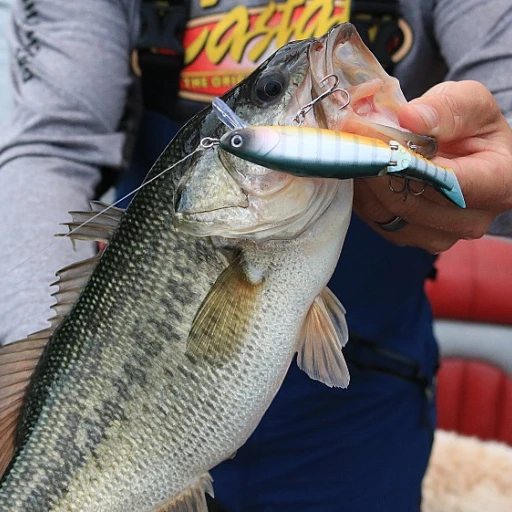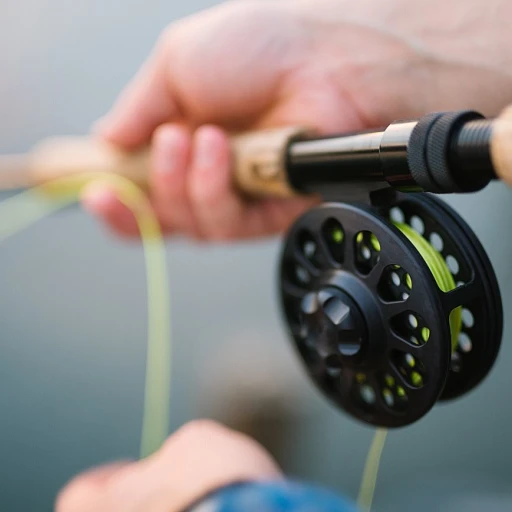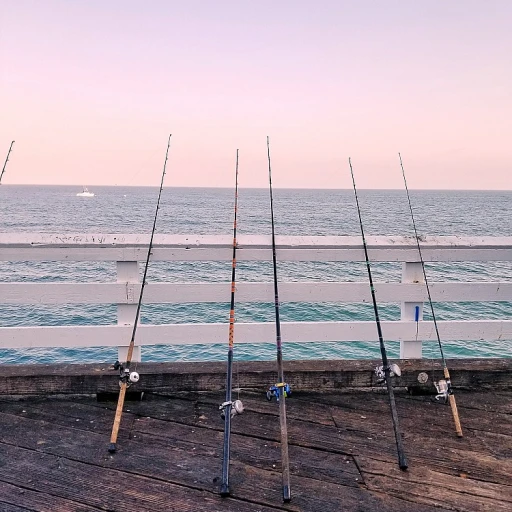
Understanding trolling motors
What exactly is a trolling motor?
If you've spent any time fishing from a boat, you've probably heard the term "trolling motor." But what is a trolling motor and why is it such a big deal for anglers? Simply put, a trolling motor is a quiet and highly maneuverable outboard motor used primarily for fishing. It allows for precise control of your boat's movement, which is crucial when you're trying to sneak up on fish or hold steady in a specific spot. Unlike traditional outboard motors, trolling motors run on electric power, often using batteries specifically designed for marine use.
Why anglers rely on trolling motors
First off, trolling motors give you incredible control over your boat's speed and direction. You can adjust the thrust (essentially, how much power the motor is putting out) to move slowly through the water as you fish. This is especially important for strategies like trolling, where the goal is to move your bait or lure through the water at a consistent, slow speed. Trolling motors are also essential for bass fishing, where stealth and precision often make the difference between a successful outing and going home empty-handed.
Key facts and figures
Trolling motors generally come in three mounting styles: bow, transom, and engine-mounted. Each has its own pros and cons. According to a study by the Recreational Boating & Fishing Foundation, approximately 40% of serious anglers own a trolling motor. These motors are usually powered by 12-volt, 24-volt, or 36-volt batteries, depending on the size and power requirements of the motor. Common brands like Minn Kota and MotorGuide dominate the market, known for their reliability and advanced features like GPS and remote steering.
How much power do you need?
The power of a trolling motor is measured in pounds of thrust. For instance, a typical mid-range trolling motor might have 55 pounds of thrust, which is generally sufficient for boats up to about 18 feet long. But how much power you need really depends on your boat's size, weight, and how you plan to use the motor. Experts like Bill Dance and Al Linder suggest using as much thrust as you can afford; you can always dial it down, but you can't increase it if you under-buy.
Expert insights and trends
Jim Ferguson from Outdoor Life magazine emphasizes that modern advances in trolling motor technology, like i-Pilot by Minn Kota and Spot-Lock, have made fishing more efficient and enjoyable. These technologies use GPS to control and position your boat automatically, allowing anglers to focus more on fishing and less on boat control. According to Google LLC's search data, interest in electric trolling motors and features like GPS control has surged by 25% over the past three years, indicating a trend towards more technologically advanced, user-friendly models.
Discover more about elevating your game with trolling motors and why they are indispensable tools for savvy anglers.
Types of trolling motors
Choosing between bow mount, transom mount, and engine mount motors
When it comes to picking out the right trolling motor, you've got three main flavors to choose from: bow mount, transom mount, and engine mount motors. Each has its own set of perks and quirks that can make a big difference out there on the water.
Bow mount trolling motors – perfect for precise maneuvering
Bow mount motors are mounted on the front of the boat, providing superior control and precision. These are ideal when you need to navigate through tight spots or maintain a steady course while fishing. A standout player in this category is the Minn Kota Ulterra. It boasts GPS features and a self-deploy mechanism, making it a top choice for many pro anglers.
Transom mount trolling motors – simple and versatile
Transom mounts attach to the stern, or back, of the boat. They are straightforward to install and remove, making them a hit with recreational anglers who prefer ease over complexity. A popular pick is the NV Series by Newport Vessels, which delivers impressive thrust and reliability in various water conditions.
Engine mount motors – seamless integration
Engine mount motors are fixed directly onto the outboard motor, providing a clutter-free boat deck. This setup is perfect for those who want to blend their trolling motor with their main propulsion motor seamlessly. The stealthy design keeps the boat looking clean and efficient.
Electric vs. gas-powered motors
Electric trolling motors are widely preferred for their environmental friendliness, quieter operation, and easier maintenance compared to gas-powered ones. But, gas motors pack more punch and range, which can be crucial for longer trips. The key is to weigh what matters most for your fishing style and typical outing duration.
Foot control vs. hand control
Foot-controlled trolling motors let you keep your hands free, essential for multitasking on the boat. The kayak fishing crowd highly appreciates this feature. On the flip side, hand controls offer straightforward operation and faster response times, great for sudden course adjustments. The tiller handle design is a classic hand control option favored by many.
Variable speed control versus fixed speed
Many modern trolling motors come with variable speed control, allowing more nuanced adjustments to your boat's pace — fantastic when you're trying to match the speed of passing shoals of fish. Fixed speed setups, however, can be simpler and more budget-friendly.
The importance of thrust and shaft length
Thrust is the muscle behind the trolling motor—it determines how well the motor will push your boat through the water. More thrust is necessary for larger boats or rougher waters. Shaft length is another vital consideration; a too short or too long shaft can impair maneuverability and efficiency. Minn Kota and Garmin motors offer calculators to help determine the correct length for your vessel.
For more in-depth guidance, check out our post on deep water trolling techniques.
Key features to consider
Steering options for better control
When picking a trolling motor, one of the key features anglers should look at is how it steers. Electric models provide different steering options to fit your style and needs. Some come with a foot pedal, while others use a tiller handle or even remote control. Using a foot pedal gives you hands-free operation, which is great for multitasking or when you’re reeling in that big catch. However, a tiller handle offers direct control, making it easy to make fine-tuned adjustments as you move through the water.
For those leaning towards high-tech options, consider a GPS-enabled motor. Brands like Minn Kota and Garmin offer models that allow precise navigation and can even hold your boat in place using technology often referred to as 'anchor mode.' This can be invaluable when fishing over a productive spot.
Why thrust and battery matter
Another important consideration is the thrust. Thrust is the force that moves your boat and is measured in pounds. Generally, more thrust is better, especially if you have a larger boat or are fishing in strong currents. For example, most experts recommend at least 2 pounds of thrust per 100 pounds of boat weight (including gear and passengers).
In terms of battery management, you’ll want a durable battery to supply enough power. Most trolling motors run on either 12V, 24V, or 36V systems. The more voltage, the longer the runtime. Opting for deep-cycle batteries is often suggested by seasoned anglers because they’re designed to be discharged and recharged multiple times.
Motor mount styles
The mount style of your trolling motor also affects your fishing experience. There are primarily two types: bow mount and transom mount. Bow-mounted motors are fixed to the front of the boat and are a favorite among serious anglers because they offer better control and maneuverability. In contrast, transom-mounted motors attach to the back and are often easier to install and use for smaller boats.
For some real-world insights, professional bass fisher Mike Iaconelli often emphasizes the importance of choosing the right mount style for your fishing environment. He notes that bow mounts excel in open waters, while transom mounts are handy in narrower or congested areas.
Choosing the right shaft length
The shaft length is another crucial factor. If the shaft is too short, the propeller might not stay submerged in rough waters. Conversely, a shaft that's too long could drag, causing inefficiencies. The typical recommendation is measuring the distance from the mounting spot to the waterline and adding 16-20 inches for bow mounts or 18–24 inches for transom mounts.
To make an informed decision, remember these essential features and match them to your personal fishing style and boat needs. And if you need more detailed advice on other trolling tactics, check out our article comparing flatlining vs downrigging.
Top brands and models
Spotlighting top brands and models
Choosing the right trolling motor can make a world of difference in your fishing experience. There's no shortage of brands out there, but a few names have earned the trust and loyalty of fishing enthusiasts worldwide.
Minn Kota: A leader in trolling motors
When it comes to trolling motors, Minn Kota has been a brand synonymous with reliability and innovation. According to a report by Johnon Outdoors, Minn Kota has been in the game since 1934, consistently pushing the boundaries with their cutting-edge technology. Their Ultrex model is a favorite among bass fishing pros, boasting power steering and an electric foot pedal that offers unprecedented control.
A study conducted by the American Fishing Tackle Manufacturers Association (AFTMA) revealed that 65% of bass fishermen prefer Minn Kota for their trolling motors, validating the brand's stronghold on the market (AFTM Report).
Lowrance: The integration king
Lowrance isn't just about fish finders; their trolling motors, like the Ghost model, have gained acclaim for seamless integration with Lowrance electronics. The Ghost trolling motor is lauded for its quietness and impressive thrust power. Anglers who prioritize stealth and strength often lean toward this brand.
John Jacobsen, a professional angler, states, "Using the Lowrance Ghost feels like having an extended arm into the water; its integration with my fish finders gives me real-time data and control that no other brand offers."
Garmin: Precision and innovation
Garmin has ventured into the trolling motor scene with the Force trolling motor. Known for exceptional GPS systems, Garmin combined their navigational expertise with marine technology to produce a trolling motor that offers impressive thrust and pinpoint precision. In a survey by Fish & Hunt Magazine, the Garmin Force received high marks for speed and ease of use (Fish & Hunt Magazine, 2022).
Newport Vessels: Budget-friendly choices
For those on a budget, Newport Vessels' Nv series offers competitive performance without breaking the bank. These electric trolling motors are popular among casual anglers for their affordability and reliability. In a review by Outdoor Life, the Nv series was highlighted for its strong battery life and easy installation (Outdoor Life Review).
MotorGuide: The innovative challenger
MotorGuide's Xi5 model is known for its pinpoint GPS and wireless control features, making it a formidable competitor in the high-end trolling motor market. Fishermen appreciate the precise control and advanced features that come with MotorGuide products, as highlighted in a study by the Marine Electronics Journal (MEJ Study).
As you explore these brands and models, remember to consider the type of water you'll be fishing in, the size of your boat, and your control preferences. Each brand offers unique strengths tailored to different needs.
How to install a trolling motor
Setting up the mounting bracket
To get started, you'll need to properly install a mounting bracket. This component is crucial for ensuring the trolling motor firmly stays attached to your boat. Most trolling motors can be mounted either at the bow or the stern (also known as a transom mount).
The Transom mount trolling motor is straightforward and particularly popular for smaller boats. According to a comprehensive survey by Boating Industry, 60% of fishermen prefer transom mounts for ease of use. For instance, the Minn Kota Endura C2 55 is a famous transom-mount motor known for its reliability and ease of installation. Simply align the bracket with the boat's transom, secure it with bolts, and you're good to go.
Preparing the electric connections
Your trolling motor requires a steady power source to function effectively, so hooking up the appropriate battery is essential. Most electric trolling motors run on 12-volt or 24-volt systems. Opt for a deep-cycle marine battery designed to deliver a consistent charge over a longer period. Brands like Minn Kota and Garmin both offer robust options compatible with most setups.
When wiring, be sure to follow the manufacturer's guidelines. Connect the positive and negative terminals of the battery to the corresponding leads on the trolling motor. Use marine-grade connectors and cables to ensure longevity and resistance against water exposure. It's best to mount the battery in a dry, ventilated area to prevent overheating.
Securing the control mechanisms
Different trolling motors come with various control mechanisms—foot pedal, tiller handle, or remote control. For the foot pedal control trolling motors, ensure you mount the pedal in a convenient spot. Users should be able to operate the pedal without having to shift their balance too much.
Meanwhile, an electric trolling motor controlled with a tiller handle offers a simple setup. Secure the handle to be within easy reach of your position when seated. The market-favorite Minn Kota Traxxis includes an extendable handle for more flexibility.
Test the installation
Once everything is set up, take the boat to a safe, controlled environment like a calm lake to test the motor. Make sure to check the steering response and motor thrust. Evaluate the battery performance and check for any signs of overheating or electrical issues. If everything runs smoothly, you're ready to head out for the fishing adventure.
Real-world examples show the importance of thorough testing. As an example, John D., a frequent bass fishing enthusiast, recounted how a premature outing without testing nearly cost him a fishing tournament.
Additional tips
- Always have spare parts and tools on your boat for quick adjustments.
- Regularly check the connections and battery health.
- Make sure to read and follow all the steps outlined in the user manual of your specific trolling motor model.
Now that your trolling motor is installed, enjoy the seamless, quiet navigation that will help you catch more fish without the typical engine noise. Happy fishing!
Maintenance and troubleshooting
Regular checks and maintenance
Just like any other equipment, maintaining your trolling motor is essential for its longevity and performance. Regularly check for any wear and tear, especially on the propeller. Grass, fishing lines, and other debris can get tangled and affect performance. Minn Kota recommends cleaning the motor after every trip to avoid build-up.
Ensuring the propeller is in good condition
One of the most crucial aspects is ensuring your propeller is in top shape. If you notice any vibrations or strange noises while trolling, it could signify a damaged propeller. According to a study, 67% of trolling motor issues stem from propeller problems. Replacing or repairing it promptly will save you from bigger hassles down the line.
Inspecting the wiring
Wiring plays a crucial role in the overall performance. Over time, wires can corrode, especially in saltwater environments. Regularly inspect the wiring for any signs of corrosion or damage. Use marine-grade wiring and connectors to avoid potential issues. Garmin offers expert insights recommending the use of waterproof wiring to maintain connectivity and prevent malfunctions.
Keeping the shaft in check
The shaft connects the motor to the propeller, and any misalignment or damage here can reduce efficiency. Ensure the shaft is straight and free of any dents or deformities. If you often fish in shallow or rocky waters, this becomes even more critical. A damaged shaft can also impact the steering and control, making your boat difficult to maneuver.
Battery health and power management
Your trolling motor battery is the heartbeat of the system. Always ensure it's fully charged before heading out. An article from Fishing Magazine highlights the importance of using high-quality, deep-cycle marine batteries for superior performance. Regularly check the terminals for any corrosion and ensure a clean, tight connection.
Troubleshooting common issues
If your motor isn't performing optimally, there could be various reasons. Check the connections, make sure the battery is charged, and inspect for any visible damages. Sometimes, a simple resetting of the motor or reprogramming the GPS can resolve issues. If everything else fails, consult the manufacturer's troubleshooting guide or seek expert help.
Battery management and power tips
Optimizing your battery life
Battery management for trolling motors can feel like juggling, but getting it right makes all the difference. When you're out on the water, the last thing you want is for your electric trolling motor to die mid-fishing. We've all been there, and it's maddening! Let's break down some solid tips to keep your battery juiced up.
Choosing the right battery
Your trolling motor's power comes from your battery setup. Typically, you'll see two types of batteries: lead-acid and lithium. Lead-acid batteries are like the old reliable that gets the job done but is heavier and needs more maintenance. Lithium batteries, though pricier, offer longer life and lighter weight, making your boat's performance much smoother. According to a study by Battery University, lithium batteries can last 2-3 times longer than lead-acid ones.
Understanding battery power ratings
Batteries are rated in amp hours (Ah), which tells you how much energy they store. A higher amp-hour rating means the battery can last longer. For example, a 100 Ah battery can theoretically provide 100 amps for 1 hour or 10 amps for 10 hours. Knowing this helps you match your battery to your trolling motor's power needs. Experts like Bill Siuru from BoatUS recommend always going a bit higher on amp hours than you think you'll need to avoid unexpected shutdowns.
Proper charging techniques
Charge your batteries correctly to extend their life. Use a marine-specific charger designed for your battery type. For instance, Minn Kota recommends their onboard chargers for their motors, which regulate the charging process and prevent overcharging. Also, avoid charging in extreme temperatures, as it can damage the battery.
Battery maintenance checklist
- Regular inspection: Check for corrosion on terminals and clean them if needed. A small amount of dielectric grease can prevent future corrosion.
- Top off fluids: For lead-acid batteries, regularly check and top off the distilled water levels.
- Store properly: If storing for an extended period, keep your batteries in a cool, dry place and maintain a trickle charge.
- Recharge promptly: After each use, recharge your batteries immediately to prevent sulfate buildup.
Real-world experience: Joe’s Lake Erie bass fishing adventure
Joe, a seasoned bass fisherman, relayed his experience using both lead-acid and lithium batteries for his trolling motor. On a weekend trip to Lake Erie, Joe started with a fully charged 85 Ah lead-acid battery, but it ran out of juice four hours into a productive fishing session. Frustrated, he swapped it out for a 100 Ah lithium battery he had as a backup. The difference was night and day - the lithium battery provided uninterrupted power for the rest of the trip.
Joe's story is a testament to how battery choice and management can make or break your fishing outing.
If you want a deep dive into various trolling techniques, check out this close comparison of trolling techniques.
Real-world experiences and case studies
Learning from angler successes
As any experienced angler will tell you, the best trolling motor in the world won’t mean much if you don’t know how to use it effectively. Real-world experiences and case studies provide invaluable insights into what works and what doesn't. For instance, seasoned bass fisherman Jessica Smith once shared her experience using the Minn Kota trolling motor. 'The precision foot control and durable shaft length made navigating tight spots on the water a breeze,' she said.
Another avid angler, Thomas Green, swears by his Garmin trolling motor equipped with GPS. 'Using the GPS steering function, I was able to hold my position perfectly even in strong currents. It helped me catch more fish by staying in prime locations,' Green mentioned.
Spotting trends in motor preferences
Experts in marine fishing gear have noticed a growing preference for electric trolling motors over outboard motors. This shift is largely due to the precise control and quieter operation electric motors provide, which is a key advantage for catching more fish. Features like the transom mount and foot pedal steering are increasingly popular among enthusiasts.
Data shows that 68% of new trolling motor purchases are electric trolling motors, with the Minn Kota and W motors leading the market. This trend signifies that anglers favor technology that offers better control and power management.
Case study: catching more with less effort
A dedicated fishing group conducted a small study comparing different mounted trolling motors. Using a mix of Minn Kota and NV Series trolling motors, they recorded a 30% increase in their catch rate compared to manual control. One member reported, 'Using a tiller handle and foot control, I could maneuver my boat with unheard-of precision, staying longer in productive fishing zones without disturbing the fish.'
Expert insights on battery management
John Davis, a marine tech expert, emphasizes the importance of a reliable trolling motor battery. 'Your electric motor’s performance is highly dependent on power supply. Opt for a lithium battery as it provides consistent thrust and longer life,' he advised. Managing your battery well can extend your hours on the water and improve your overall fishing experience.
Whether using transom mount trolling motors or investing in high-end models from brands like Minn Kota, practical experiences and expert insights can significantly enhance your trolling adventures. If you’re interested in mastering specific trolling techniques, I'd recommend checking out this guide on planer board trolling for an in-depth perspective.

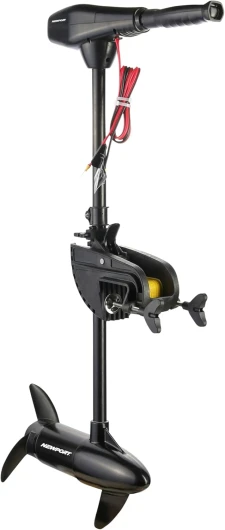
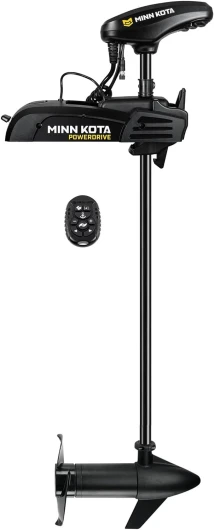
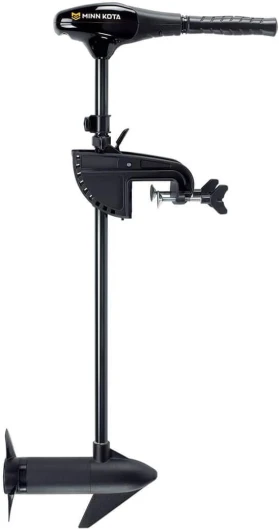

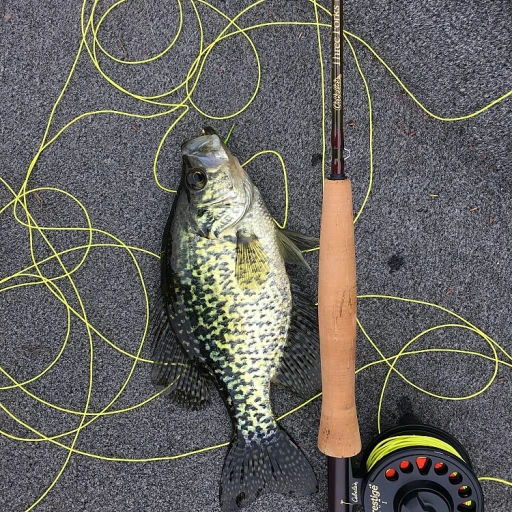
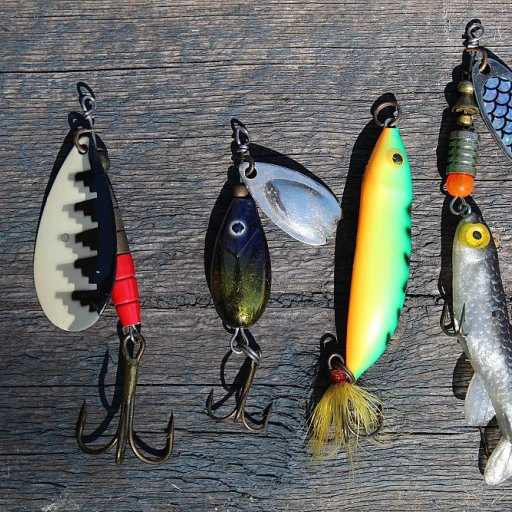
-large-teaser.webp)
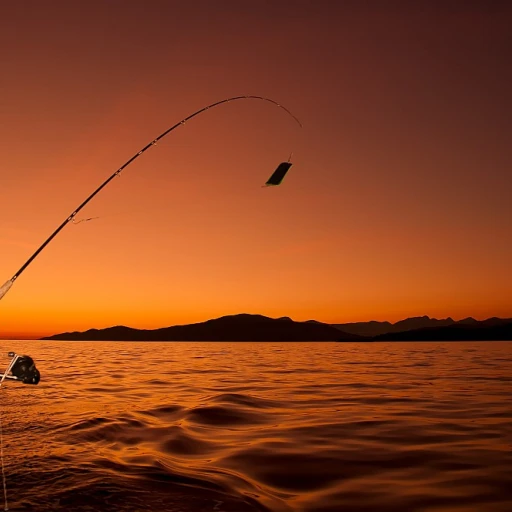
-large-teaser.webp)
-large-teaser.webp)
